BTicino Emergency luminaires
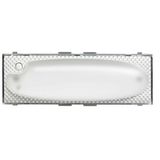
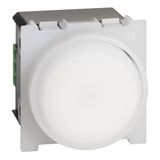

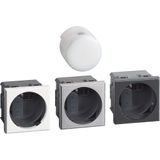
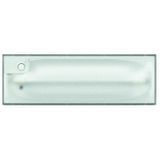
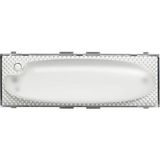

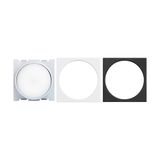
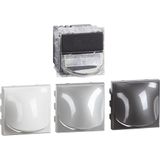
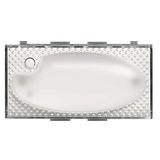
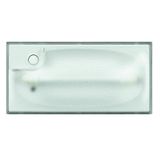


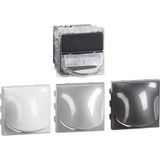
In professional buildings, lighting doesn’t end when the power goes out — that’s where Bticino emergency luminaires take over. Engineered for reliability, longevity, and compliance with European safety standards, they provide illumination, orientation, and evacuation guidance during mains failure. Whether installed in offices, stairwells, or industrial corridors, Bticino emergency lights are built with the same precision and material quality that define the brand’s electrical systems.
BTicino LED emergency lighting — efficient and dependable
Modern emergency lighting relies on LED efficiency and control. Bticino LED emergency lighting uses high-efficacy diodes paired with low-loss drivers and intelligent charging circuits.
Power consumption stays minimal in standby, while LED lifetime exceeds 50,000 hours, reducing maintenance intervals.
The housings are made from self-extinguishing polycarbonate with optical diffusers that distribute light evenly across escape paths.
Built-in electronic control units continuously monitor battery voltage, LED status, and charging functions — ensuring readiness every time the mains drop.
BTicino Maintained and non-maintained luminaires
Every building has different lighting requirements during operation and emergencies. Bticino maintained emergency luminaires operate both as general lighting and as emergency units when power fails. They’re ideal for corridors, assembly points, or public spaces where illumination continuity is critical.
Non-maintained emergency luminaires remain off during normal operation and activate only during outages — perfect for staircases, technical rooms, or exits where emergency function alone is required.
Both types share identical housings and optical systems, simplifying installation and maintaining aesthetic continuity throughout the building.
BTicino Emergency exit signs — clear guidance under pressure
When visibility matters most, Bticino emergency exit signs provide clear directional marking.
The panels feature high-contrast pictograms in compliance with ISO 7010, illuminated evenly without hotspots.
LED backlighting guarantees uniform brightness even after years of use, and replaceable legend plates make them adaptable to different exit configurations.
They can be mounted on walls, ceilings, or suspended, and optional DALI or self-test versions integrate easily into building management systems.
BTicino Emergency bulkheads — rugged and reliable
Outdoor and industrial areas demand impact resistance and sealing. Bticino emergency bulkheads deliver both.
IP65-rated enclosures, UV-resistant lenses, and stainless steel clips protect the electronics from dust, moisture, and mechanical impact.
Their wide beam optics provide area coverage for loading bays, external walkways, or car parks.
Available in maintained or non-maintained versions, each bulkhead comes with high-temperature NiMH or LiFePO₄ batteries that hold stable capacity over hundreds of charge cycles.
BTicino Emergency downlights — discreet ceiling integration
In modern interiors, emergency fittings shouldn’t interrupt the design language. Bticino emergency downlights integrate seamlessly into ceiling grids and plasterboard installations.
Compact housings conceal the battery pack and driver, leaving only a small trim visible.
Their optics deliver wide-angle illumination ideal for corridors or open spaces, with luminous output optimized for 1–3 hour autonomy.
Quick-fit connectors simplify wiring, and spring clips allow tool-free mounting — the kind of detail installers value when fitting dozens of units per floor.
BTicino Emergency twinspot units — focused illumination for large spaces
When larger areas or high ceilings require directional emergency light, Bticino emergency twinspot luminaires provide dual adjustable heads with high-output LEDs.
Each head can be aimed to cover exit routes or machinery zones, ensuring both egress and hazard visibility.
They’re common in warehouses, production halls, and sports facilities where ceiling-mounted luminaires need concentrated performance.
Integrated self-test and battery condition monitoring simplify routine maintenance and inspection.
BTicino DALI and self-test emergency systems
In intelligent buildings, manual testing is obsolete. Bticino DALI and self-test emergency luminaires handle diagnostics automatically.
The self-test modules perform periodic function and duration checks, logging results for facility teams.
DALI-enabled models communicate with central management systems, allowing remote monitoring, group testing, and fault reporting.
This automation reduces inspection labor and ensures regulatory compliance without disrupting building operations
1–3 hour emergency operation — consistent autonomy
Depending on risk assessment and application type, emergency lighting must operate between one and three hours after mains failure.
Bticino 1–3h emergency lighting options cover both ends — single-hour units for standard evacuation routes, and extended three-hour models for critical areas like hospitals or transport hubs.
Battery management electronics protect against deep discharge and overcharge, extending service life while keeping autonomy predictable even after years of use
Built for compliance and endurance
All Bticino emergency luminaires comply with EN 60598-2-22 and related European directives for emergency lighting systems.
Each unit undergoes photometric testing to verify luminous flux, spacing, and escape route illumination levels.
Components are selected for temperature stability, low self-discharge, and long maintenance cycles.
Once installed, they work quietly in the background — ready when needed, invisible when not.
Wholesale and B2B supply
At Bank of Lamps, we supply the complete Bticino emergency lighting range — LED luminaires, bulkheads, downlights, exit signs, twinspots, DALI/self-test units, and 1–3h duration models — directly from our warehouse in Latvia, exporting across Europe.
We work with electrical contractors, facility engineers, and building integrators who require compliant, maintainable emergency lighting systems ready for immediate installation.
Each shipment includes photometric data, wiring diagrams, and test reports for certification and commissioning.